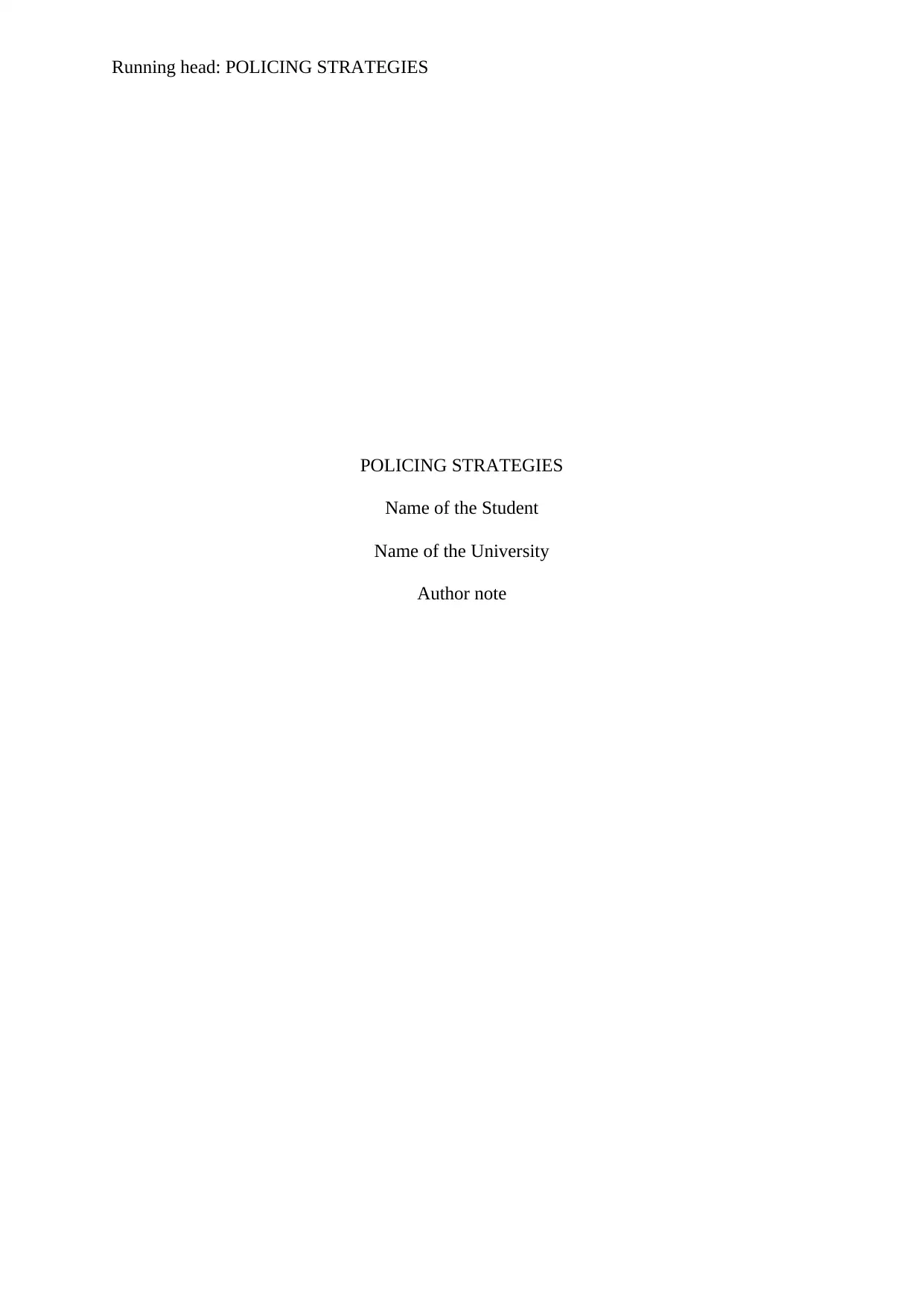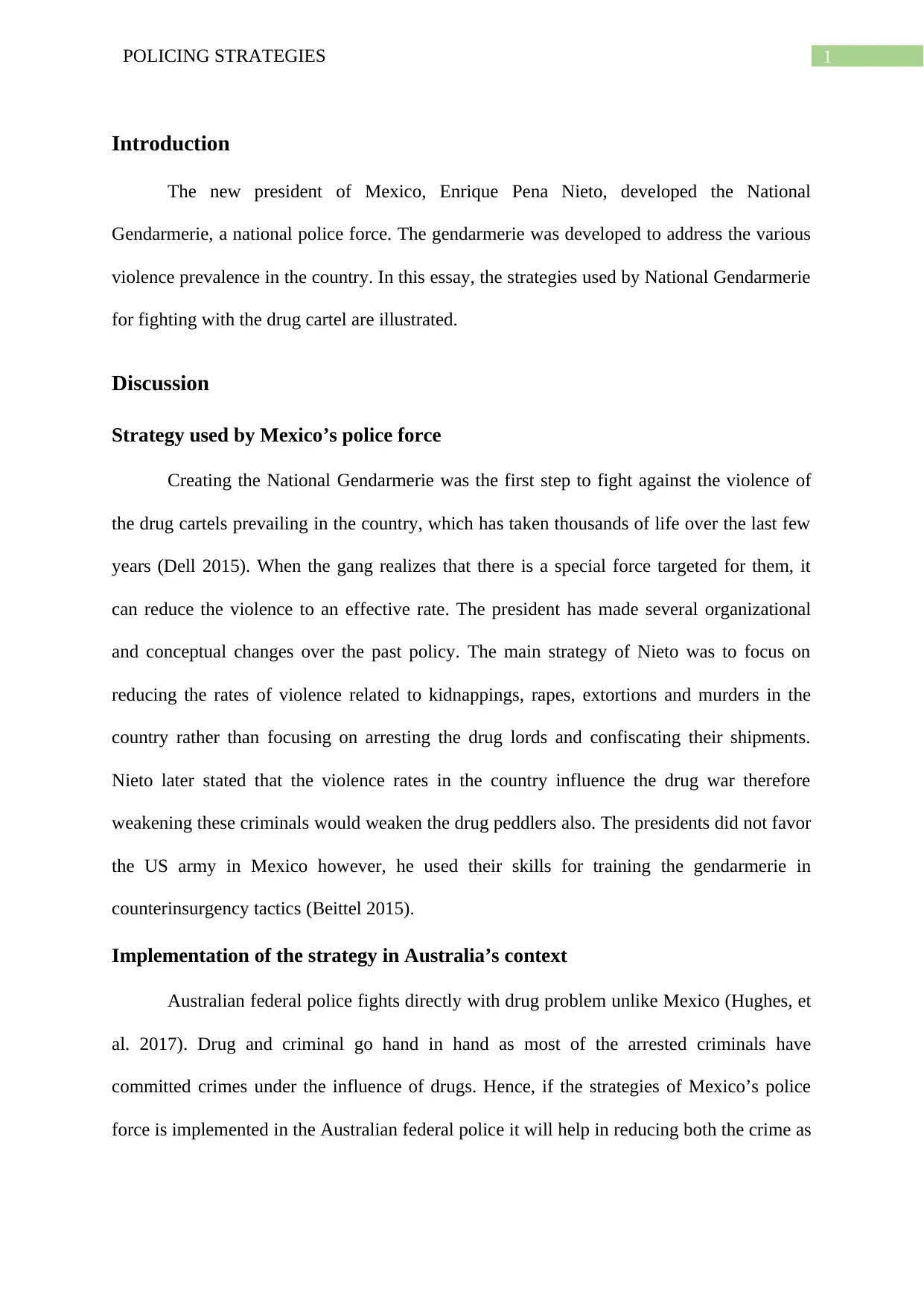Policing Strategies: Comparative Analysis of Mexico and Australia
VerifiedAdded on 2022/08/22
|4
|583
|16
Homework Assignment
AI Summary
This assignment examines policing strategies, focusing on the approaches of Mexico and Australia. It begins by discussing the creation of Mexico's National Gendarmerie as a response to violence from drug cartels, highlighting the shift in focus from arresting drug lords to reducing violence rates. The assignment then compares this strategy with the Australian Federal Police's direct approach to combating drug-related crime. It explores how the Mexican strategy could be implemented in Australia to reduce both crime and drug rates. Furthermore, the document considers the impact of cultural and social issues, such as population growth and migration, on crime rates within different jurisdictions. The conclusion emphasizes the similarities in policing strategies across jurisdictions while underscoring the significant influence of social and cultural factors on police departments and crime rates, suggesting these issues need to be addressed to decrease societal crime.
1 out of 4






![[object Object]](/_next/static/media/star-bottom.7253800d.svg)